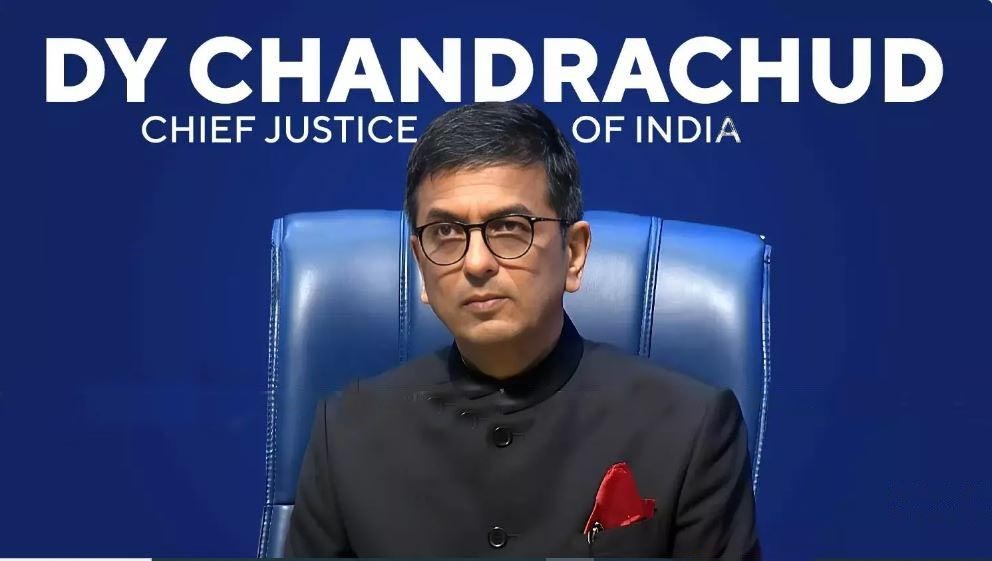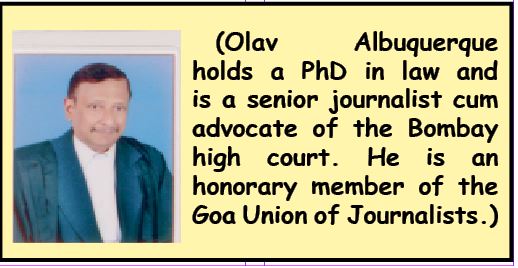Goa is abuzz with excitement as vintage bike and car owners, users, collectors and fans are decking […]

CHANDRACHUD HAS LET DOWN INDIA! By Dr Olav Albuquerque
LAW, Nov 02- Nov 08 2024 November 1, 2024Chief Justice of India Chandrachud has let down the high hopes we reposed in him…
THE 50th CJI Dhananjaya Chandrachud was in Goa less than a month ago where he was felicitated. As a judge of the Supreme Court, there was no opportunity for him to visit this tiny state to find out how the judiciary functions over here. At the time of writing this there were just five working days left for the 51st CJI Sanjiv Khanna to take over from his predecessor, CJI Dhananjaya Chandrachud, who has voiced concern over how history will judge his long tenure which was the longest for the last 14 years, and will only be surpassed by Justice J.B. Pardiwalla in 2028.
The 51st and 52nd CJIs who are Sanjiv Khanna and Bhushan Gavai respectively, have too short a tenure of around six months for us to evaluate their resilience to government pressures to appoint allegedly pro-government judges like Justices MR Shah and Deepak Gupta — whose names were immediately cleared for elevation although the names of other excellent judges were kept in limbo.
CJI Chandrachud could have made a bigger impact were it not for his gaffes of mixing religion with justice delivery. He took an oath to uphold the Constitution without fear or favour, affection or ill-will. However imperfect these Constitutional values may be, CJI Chandrachud was expected to deliver justice as per these norms and not as per the inspiration of his family deity however perfect it may be.
Chandrachud divulged at his native Kanesar village in Khed taluka of Pune district that God furnished him the solution to the Ram Janambhoomi imbroglio when approached. Chandrachud divulged that when he asked his deity to furnish a solution to the temple-masjid imbroglio in Ayodhya, he was given one that he incorporated in his judgment, which we now know was authored by him although none of the judges signed the judgment.
MOST MEDIA-FRIENDLY
CJI CHANDRACHUD was undoubtedly the most media-friendly of all the CJIs to date. Senior advocate Dushyant Dave quipped that he allowed the media to record all his activities from waking up in the morning to retiring at night. This has its merits and demerits because the people know how their CJI works while his predecessors kept their shortcomings and idiosyncrasies away from the media. The 47th CJI Sharad Bobde visited the RSS founder Keshav Baliram Hedgewar’s ancestral home at Nagpur (which is also Bobde’s ancestral town), only after he retired in 2021, and paid his respects to RSS leader Suresh Bhaiyaji Joshi only in 2021.
By inviting Prime Minister Narendra Modi to his official residence to pray to Lord Ganapathy during a puja in September, CJI Chandrachud (who sported a saffron kurta) has declared to the Modi government and the people that he is a “Hindu” judge who seeks inspiration from his deity. If that deity was Ram Lalla, there is a conflict of interest because it was Ram Lalla who was a litigant in the Ayodhya Ram Janambhoomi imbroglio.
Dhananjaya Chandrachud belongs to the Deshasta Rig Vedi Brahmin community and his family deity is Devi Nimgaon Khandoba. The Chandrchuds were apparently legal luminaries even during the Peshwa rule when they were free to seek divine inspiration and intervention. But those days have faded into the mists of time which is why Chandrachud was expected to adhere strictly to the Constitution, even though the leit motif of the Supreme Court has been changed from a blindfolded lady wielding a sword, to a woman looking suspiciously like a Hindu deity holding scales in one hand and the Constitution in the other.
CONCLUSION
THESE sequence of events make us conclude the 50th CJI Dhananjaya Chandrachud failed miserably to uphold Constitutional values as separate from his religious fervor. This has given rise to speculation as to whether CJI Chandrachud is seeking a post-retirement sinecure from the Modi government to emulate his not-so-distinguished predecessors like Ranjan Gogoi, who became a Rajya Sabha MP after he was given a clean chit in the sexual molestation case, and the 40th CJI Palanisamy Sathasivam, who became the 21st Kerala governor, much lower than a CJI in the table of precedence.
The controversies around CJI Chandrachud were of his own doing. His long tenure was surpassed by his father, Yeshwantrao Chandrachud, who was the CJI for seven years and allegedly close to former prime minister Indira Gandhi. He was one of the judges who signed the notorious ADM Jabalpur judgment which laid down that “life was a gift of the state and what the state gave, the state could take away.”
His son, CJI Dhananjaya Chandrachud, struck down this judgment. But the wisdom of the father has percolated down to the son who seems to have realized that a Supreme Court judge, even though a CJI, cannot be seen to bite the hand that sets aside a certain percentage of the budget to provide infrastructure to the courts.
Former CJIs have attempted to lobby for a fixed tenure of a minimum of five years for a CJI. Most of Chandrachud’s successors will not have a tenure of two years but it would be better for them to demit office early rather than succumb to government pressures. Simply because although by a legal fiction, the judiciary is separate and equal to the government; nonetheless, the government provides the infrastructure of the courts, and pays the salaries of the court staff.
The judges do not have the resources to implement their own judgments, which is why CJIS are very cautious about taking on the government and have meekly capitulated to government pressure to transfer “inconvenient” judges who have taken the government to task.
This is why some outspoken judges like Justice S Muralidhar of the Delhi high court were allegedly transferred to the Punjab and Haryana high court, after his outburst against the government during the Delhi riots when he accused the authorities of not taking action against certain dignitaries who delivered inflammatory speeches. Two other calamities were Justice Akil Kureshi, who as a Gujarat high court judge refused bail to Amit Shah, and Justice Jayant Patil who was transferred to the Allahabad High Court where he lost his seniority.
Of course, CJI Chandrachud had nothing to do with these allegedly punitive transfers. But during his tenure, he could have stood up to the government instead of choosing to maintain a cosy relationship with the executive. In sum total, the 50th CJI has let down the high hopes which the people of India had reposed in him.
















